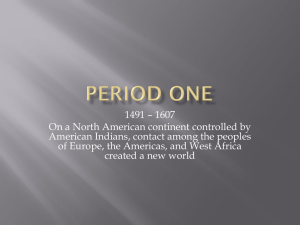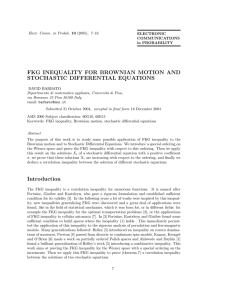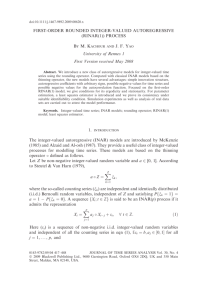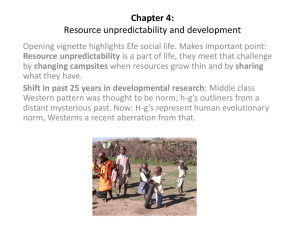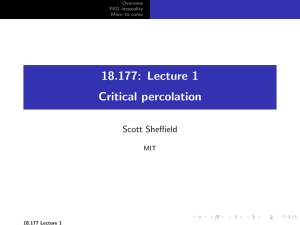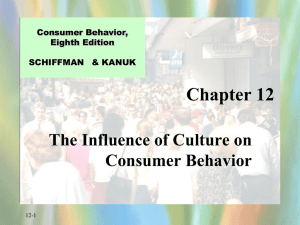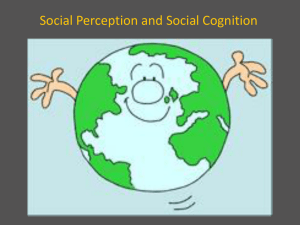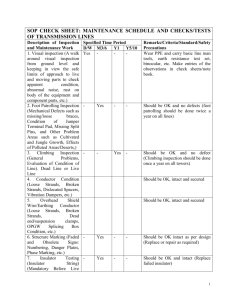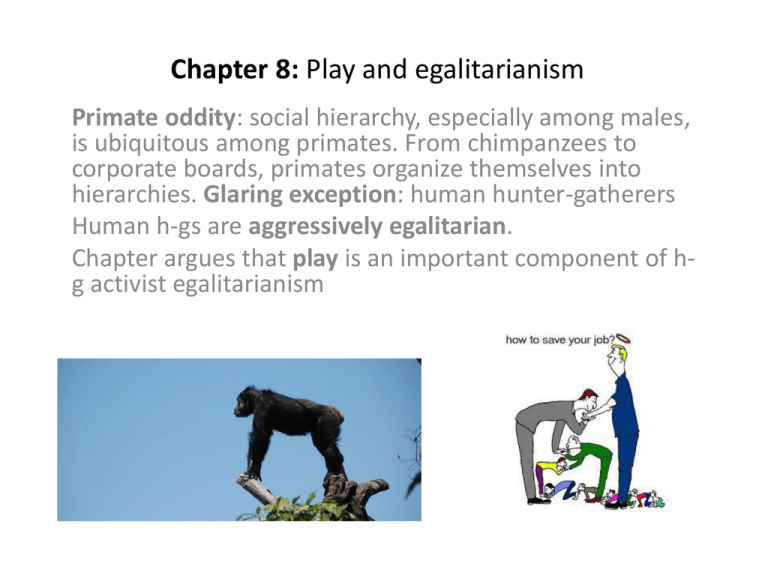
Chapter 8: Play and egalitarianism
Primate oddity: social hierarchy, especially among males,
is ubiquitous among primates. From chimpanzees to
corporate boards, primates organize themselves into
hierarchies. Glaring exception: human hunter-gatherers
Human h-gs are aggressively egalitarian.
Chapter argues that play is an important component of hg activist egalitarianism
Play and promoting egalitarianism
Play fighting goal: keep the
interaction going for as long as
possible
Real fighting goal: end
interaction quickly with clear
winner (dominant)
To achieve goal players must
consciously exercise restraint,
stronger must self-handicap;
players much strive for
equality, not dominance.
Play and promoting egalitarianism
• In play, positions of
submission or vulnerability
(such as being chased, rather
than chasing) are often more
pleasurable. Play reverses
typical rules of
dominance/submission
• In play, rules abound. Signals
of intention (play bow) invite
or initiate the interaction.
“Fair” play is the expectation
(this keeps the interaction
going) rule violations require
“apology” – usually some
ritualized act of submission.
An implicit moral code
governs play.
Play and ritual aggression
• Play is not ritual aggression. In other species these two are
clearly distinguished. In humans, competitive games
(sports, Olympic games, etc.) are combos of play and ritual
aggression. This appears to be unique to our species.
Play and egalitarianism in nonhuman primates
• Japanese macaques are
very hierarchical, and play
infrequently
• Tonkean macaques are
much more egalitarian
and play much more
frequently. This difference
is especially true among
females.
• Bonobos are more
egalitarian than
chimpanzees and have
more adult-adult play,
especially rt play and sex
play among females
Play among hunter-gatherers
• Hypothesis: H-gs culturally promoted playfulness as a
guard against dominance; groups shunned and
expelled dominant non-playful members, females
preferred playful males as mates. Both cultural and
sexual selection favored playfulness over dominance.
Characteristics of human play
• Self-chosen and self-directed
(people chose to play, not
cohersed)
• Intrinsically motivated
(satisfying for its own sake,
suggests that it served some
adaptive purpose)
• Guided by mental rules
(players understand how
they are supposed to play
and what is not play)
• Imaginative (mentally
distinct from serious realworld instrumental
activities)
• Conducted in alert, active,
but non-stressed frame of
mind
H-g game playing
• Most h-gs have free time daily:
subsistence activities on average
take 5-6 hrs. Rest of day spent in
leisure activities – talking, resting,
mending tools, games, dancing,
playing.
• Non-competitive games common
among most h-g’s, often games
stress coordinated rhythm,
teamwork, creating and enjoying
drama (as in story-telling),
cooperation of some kind.
• Even games superficially competitive
are rarely ones where winners and
loser are established. They don’t
keep score, they mock those trying
to win, etc.
Playfulness and H-g religion
• H-g religion not dogmatic or theological: Instead it stresses story and
ritual that gives meaning to daily existence and help motivate members to
put group interests above self-interests.
• H-g religion emphasizes ceremony and group ritual. Not somber and
heavy, but celebratory, lots of intense dancing and drumming.
Shamanistic trance and healing ceremonies nearly universal.
• Most h-g religious are polytheistic, many more-or-less equal god, spirits.
Not strictly hierarchical as are the global religions. Common element is
trickster god, or “trickster” nature of many gods.
• H-g religion never conflicts with practical reality: it is a way of giving
meaning to tasks and daily activities, not a means of solving practical
problems or tasks.
• Ex: Gwi of Southern Africa do rain dances not to bring rain, but to
celebrate the appearance of rain clouds.
Playfulness and h-g work
• Work as toil is agricultural,
industrial, modern world notion,
not found among h-g’s
• Why not? Work among h-g’s
(hunting, gathering, tool-making,
mending, child care, etc.) are seen
as voluntary (no one forces
anyone to do it, but no one will do
it for you either), it requires skill
and intelligence, so it is not
boring drudgery; It is not done all
day; always time for other
“leisure” activities. It is highly
social, with lots of talk,
collaboration, enjoyment.
Playfulness and h-g work
• Free-rider problem largely avoided by
social pressure and the enjoyment of
sustenance activities.
• Extensive use of teasing to promote
humility and equality.
• To avoid teasing, successful members
of the group will often cloak pride in
over-blown self-deprecation. A good
hunter will say his (very fat) antelope
was too skinny or that he was lucky,
etc. Others know he is not serious, but
they appreciate that he does not
openly gloat. If he does gloat, he can
expect to be teased extensively
(insulting the meat).
Children’s play
• in h-g groups is largely unstructured and undirected by
adults. Also note: that these play groups are often mixed
age, so older kids probably do some supervising, directing.
Important point: often play of children is imitation of adult
activities, so sustenance activities are, from early on,
voluntary and filled with spirit of play.
• As with play, in h-g groups anyone can quit – leave and join
another group.


